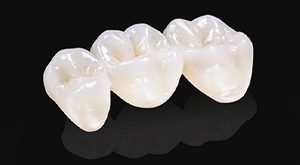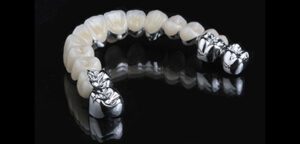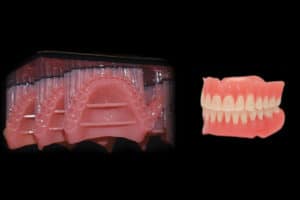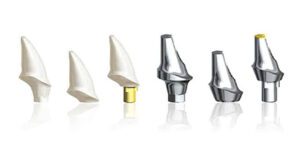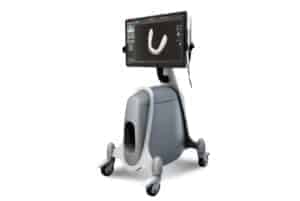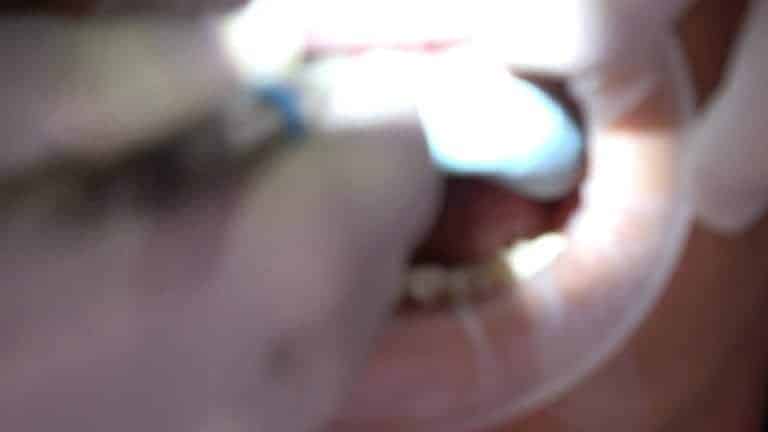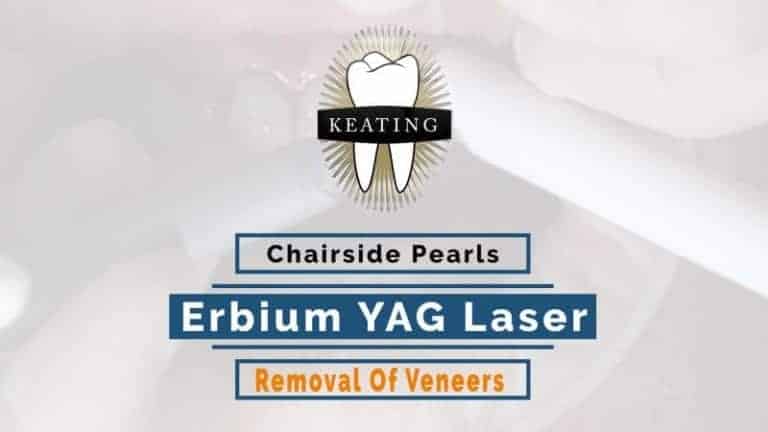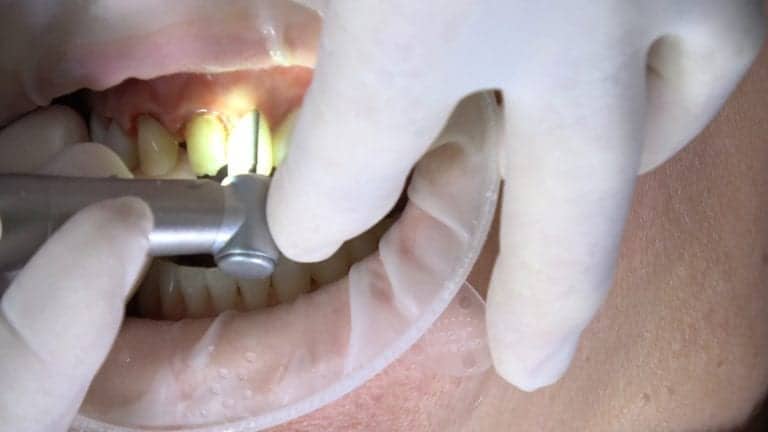Today we’re showing you how to use preparation guides and matrices to prep ten veneers on Robin. Using these matrices can help ensure you create even tissue contour and create the best result for your patient. We’ll also be using our AMD Picasso Lite laser and a Brassier chamfered diamond as a part of this procedure. For More info on Matrices visit our main site: https://keatingdentallab.com
Preparing to Use the Matrices
We first took a full arch impressions, the upper and lower, as well a face bow and then mounted it on a Pandect articulator so the lab can do a wax up. Our goal with the wax up is to be as conservative as we can be while still meeting our smile design. The diagnostic waxer also received information about length, position, and where we’re going to alter the tissue.
When we receive the wax up from the lab, it comes with a set of matrices. They made a putty matrix, which ensures we give enough room for the veneers while we also making sure we don’t over-reduce.
We’ll also have a clear plastic matrix, giving us the chance to try the fit after the tissue alteration to ensure the veneers are going to fit. Lastly, the lab provides a buckle matrix and a lingual matrix of the wax up which also help ensure we have adequate preparation.
When we sent the impressions to the diagnostic waxer, we asked that they change the tissue contour for better symmetry. This creates a guide that we’ll follow as we alter the tissue.
Altering the Tissue to Maximize Symmetry
After we numb Robin up, we’ll want to get our protective eyewear ready. It’s crucial that the patient, your assistant, and you are all wearing eyewear that’s rated to the laser you’re using. You can also get protective covers for your loupes, which is what Dr. Hornbrook chooses to use.
We’ll take the Picasso Lite laser and begin to work through the tissue we need to remove. Some hydrogen peroxide with an alternate tip is great for removing any traces of laser char you may get. Because we’re using a diode laser, it’s very stable and will stay where we cut.
Using the Matrices for Veneer Prep
Next, we’re going to take the buckle matrix and confirm that the ceramist didn’t need to modify the teeth prior to beginning the wax up. Fortunately, this case is very conservative and this will all be additive. If we take a look at the profile, we want to bring things out and we want to lengthen them.
If this were a malposition case or we needed to remove preexisting restorations, we would need to remove some of the enamel before inserting the matrix. In this case, though, there’s no need.
We want the buckle matrix to passively fit, so we’re going to need a bit of reduction on the right or the left lateral. This means taking a medium coarse diamond, and remove the angle where its protruding a small amount. We try the matrix again, and we now have adequate clearance.
We’re going to check the lingual matrix next, so that we can make sure the ceramist or the diagnostic waxer didn’t have to adjust the lingual surfaces, the incised edges, or the occlusal surface of the pre-molars. In some cases they need to in order to obtain ideal settings and occlusion. Then we’ll move to the clear plastic matrix to ensure the tissue is in the same level, and it looks good.
Placing the Veneers
Now we’re going to take the matrix of the entire wax up and take a bit of Luxatemp on cotton gauze. We’re not adding too much; just to the facial and incisal. It doesn’t need to be completely filled because we’re not making a crown, just additive, conservative veneers.
A small amount of excess should express, and we’re going to let it set for four minutes. At the two minute mark we’re going to carefully remove the excess using either a Half Hollenback or a Scaler. We’re also going to evaluate the aesthetics and fill any voids with more Lexaflow. It’s not imperative, but it allows us to better evaluate the aesthetics. Lexaflow is light-cured, so we’re going to cure it for 20 seconds.
Next we’re look at length. We’ll look at profile, smile design, and whether we sat the putty matrix properly. We can take a ruler and measure off the wax up; when they match we know we’ve seated them fully.
Because this becomes the prep guide for the final restoration, we’re going to do our depth cuts into the Luxatemp, which means placing the OptraGate back in. We need to be conservative with it, and Dr. Hornbrook is using a Brassier .03 mm cutting burr. As we cut into the acryl, we add water as we work through the three facial panes (the gingival, middle, and incisal).
Final Touches for Veneer Prep
We’re going to run through all ten teeth incisal, and run it through the line angles. Some people make the mistake of not extending the line angles; they only do the facial or buckle aspect. We’re going to the middle on this.
For the gingival, we can feel where we are based on the difference between enamel and acryl. Again, this is completely additive, and the nice thing about this case is that the only reduction needed is in the gingival third, due to adding to the middle third and buckle third.
We’ll then reach for the chamfered diamond, in this case the 6856-L 016 from Brasseler. These deep cuts in the incisal edge ensures the ceramist has enough room to build in an incisal edge effect. We’ll repeat this process on the premolars, as well.
At this point we’ll take our Scaler and remove the Luxatemp. It did its job by telling us how much to reduce. Then we’ll remove our facial and our incisal enamel and lingual down to the deep cuts, if we did alterations. Our goal in this reduction guide, putty matrix and putting the depth cuts in is to provide adequate room for the ceramic. The goal is to reproduce this mockup with the final veneers.
We hope this has given you some great information on using a preparation guide and preparation matrix for veneer prep. Your goal is to create the right aesthetics and function your patient is looking for, and these matrices can help.
For More info on Matrices visit our main site: https://keatingdentallab.com

